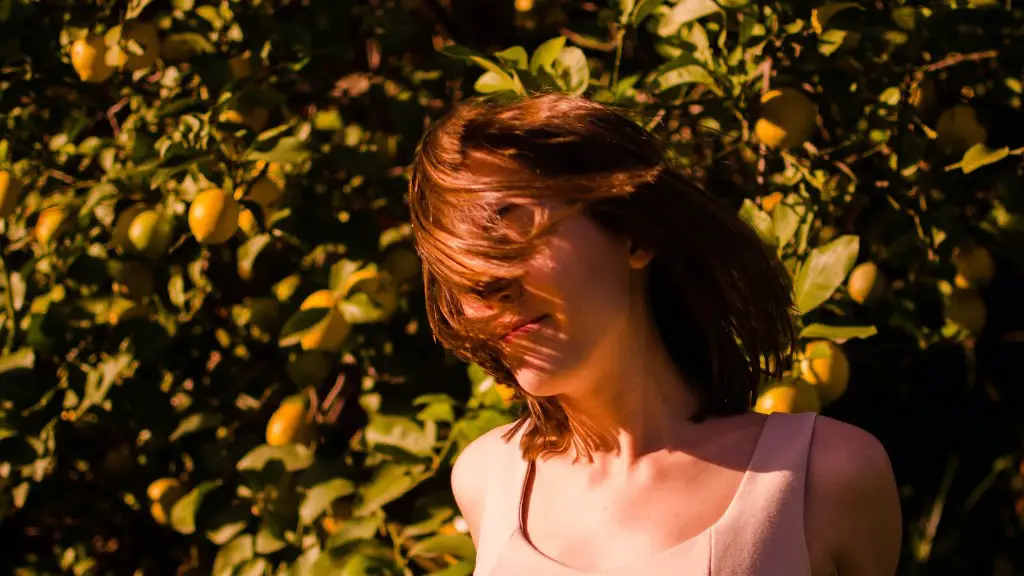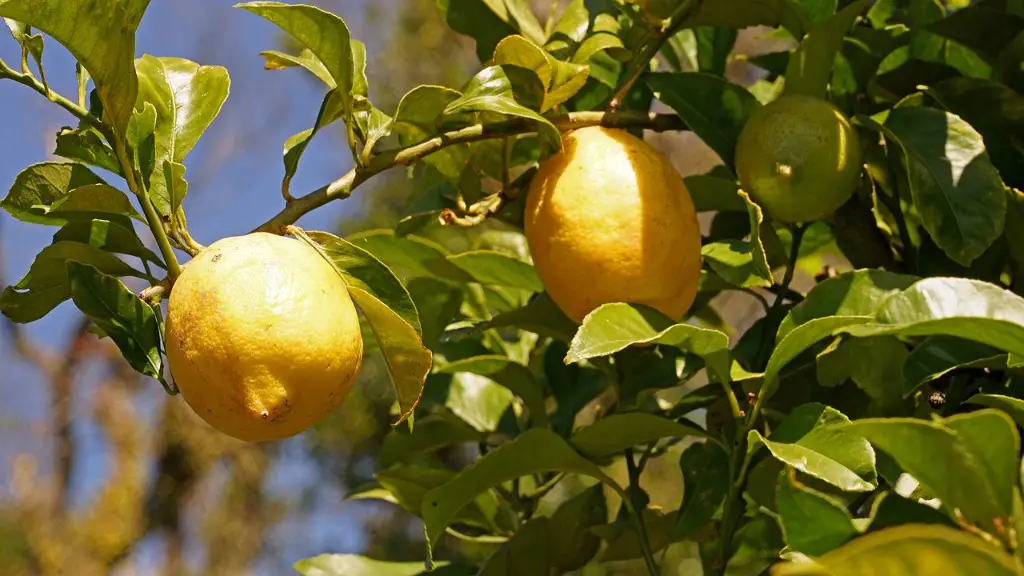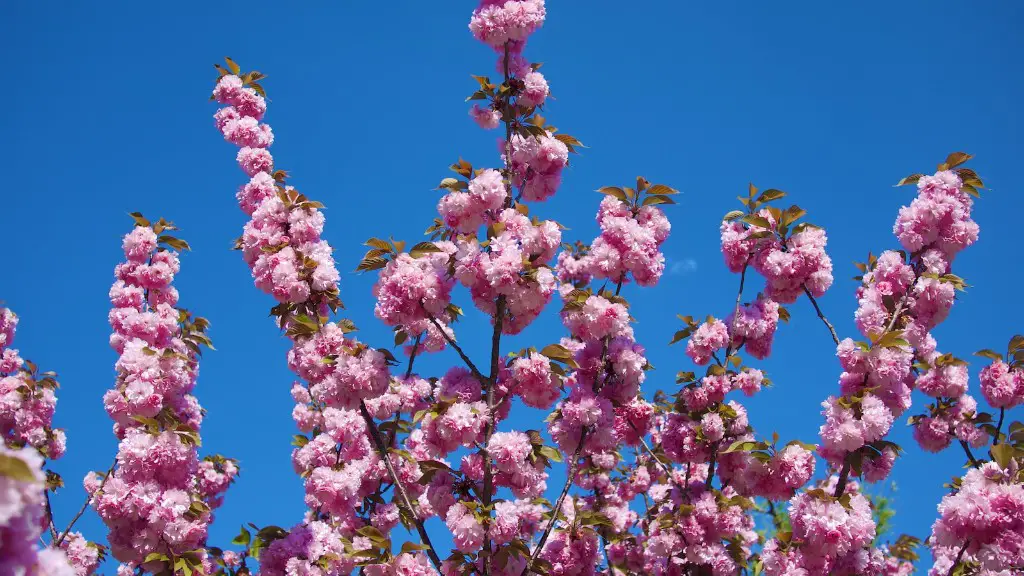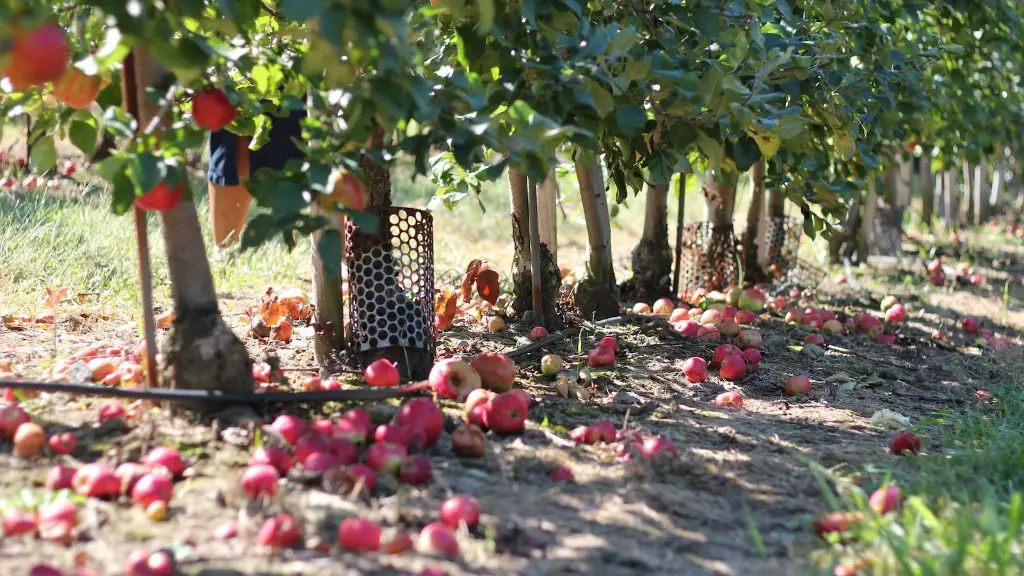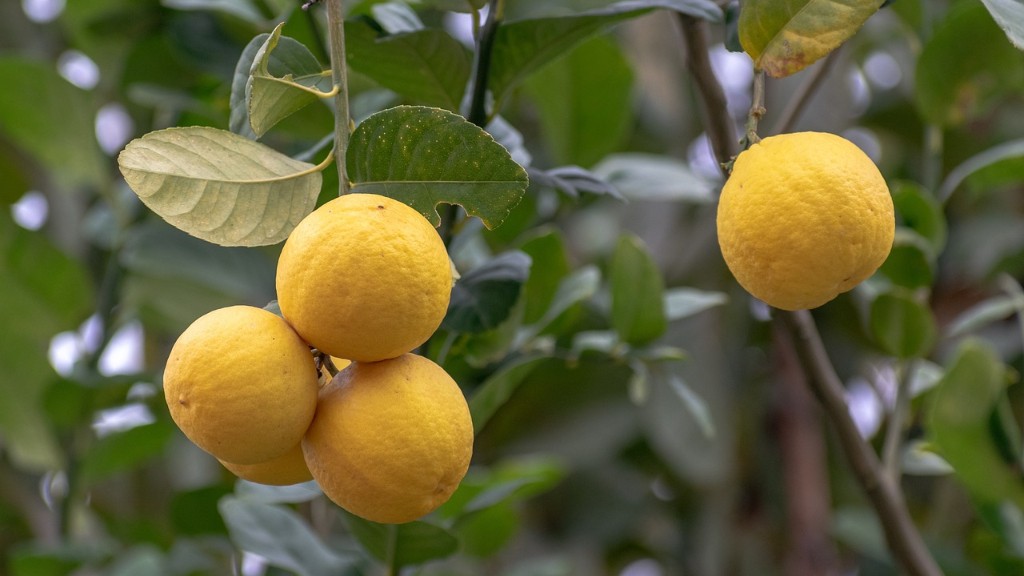Planting a Meyer lemon tree in a container is an easy and rewarding experience, with just a few steps to follow. Before getting started, you’ll need a pot at least 3 feet tall and 1.5 feet wide, soil, compost and a healthy Meyer lemon tree. Here’s how to get going:
1. Put a few layers of wet newspaper at the base of the pot, followed by a layer of small stones for drainage.
2. Fill the pot ¾ of the way with a mixture of 2 parts soil, 2 parts compost and 2 parts sand.
3. Place the tree in the pot and adjust its roots by gently pushing them into the soil.
4. Top up the soil so it comes up to the root line or slightly higher.
5. Give the tree a thorough watering, ensuring the water runs through to the base of the pot. Water with tepid water that’s just warm to the touch, avoiding cold water.
6. Place the pot in an area that receives some shade during the day, but plenty of bright light.
7. Water regularly, about twice a week, and feed your tree with a citrus-specific fertilizer every 4-6 weeks.
Watering and Feeding Regimes
To ensure your Meyer lemon tree is properly watered and fed, there is an important watering and feeding routine which needs to be followed. It is important to resist the temptation to water your tree too often, as this can lead to waterlogging, an issue which causes the roots to eventually rot. The soil should be kept slightly moist at all times and avoided from drying out.
The tree should be fed every 4-6 weeks, rather than at each watering. A liquid fertilizer specifically designed for citrus trees will give the greatest results. If necessary, organic liquid fertilizer can be used but this should not be too strong as this can cause too much of a nitrogen imbalance in the soil, leading to a reduction in blooms and fruit production.
It is crucial to feed during the flowering and fruiting period when more nutrients are needed by the tree. A regular pruning schedule should also be followed, in order to control the size and shape of the tree.
Finally, to maintain a healthy Meyer lemon tree, it is important to look out for common diseases such as citrus greening and citrus black spot. These diseases can cause the leaves to yellow and eventually fall off the tree, and the fruit to be discolored and distorted.
Pruning and Training
To maximize the size and quality of the Meyer lemons, regular and careful pruning is required. You should begin pruning as soon as the tree is planted, in order to shape and size it. If a central leader is not established, then fruiting will be delayed and the tree will become an unruly bush, rather than a tree.
The lower limbs should be trimmed frequently do avoid difficult staking and tie-downs. Prune, for example, close to the trunk to ensure light penetration and airflow to the inner branches. Trim any undesirable branches that grow outwards, especially if they rub against each other.
To encourage your tree to fruit, pinch off the tips of the branches and remove any dead or diseased wood. Similarly, the thinner the branches are, the more fruit the tree will produce. To do this, thin out the younger limbs, removing up to 1/3 of the branches.
Shaping the tree is also important, as it gives the tree structure, strength and stability. Prune according to the desired shape, whether it be vase-shaped, central-leader, round or angled. Additionally, the Meyer lemon tree should have a leader—a single trunk, remove any branches that compete with it.
Finally, use branches that are attached to the trunk at a wide angle to provide good air circulation through the tree. This debris should be removed and other thin branches should be thinned out.
Potting and Re-potting
When potting or re-potting your Meyer lemon tree, it is important to choose a pot with drainage holes in the bottom. This will allow excess moisture to drain away, helping to prevent waterlogged roots. The pot should also be large enough to accommodate the size of the tree and its roots, in order to give it enough space to grow. It should be at least 1.5 feet wide, but taller pots of 3 feet and above are also recommended.
When re-potting your Meyer lemon tree, begin by carefully loosening the root ball so that it sits just beneath the rim of the pot. Gently firm the soil around the roots and almost fill the pot with a mixture of soil, compost and sand. Water well, allowing the water to run out of the drainage holes and top up with more soil if necessary.
Finally, the Meyer lemon tree should be situated in an area with excellent light. This could be a partly shaded area, but it should be away from freezing temperatures and preferably out of direct sunlight. Meyer lemons are tolerant to a wide range of temperatures, but will greatly benefit from warmer weather.
Harvesting and Handling
Meyer lemons are ready to be picked when they are dark yellow and deeply fragrant. It is important to check that the fruit is fully ripe, as immature lemons will not ripen and taste bad. Meyer lemons should be handled with care and stored in the refrigerator to prolong their shelf-life.
In order to harvest the fruit, use a pair of sharp and clean pruning shears to snip the stem just above the fruit. Be careful not to rip off the entire stem from the branch, as this could make collecting the fruit more difficult. Additionally, it is important not to pull too hard on the branch in order to avoid injury.
Once harvested, the Meyer lemons can be kept in a cool and dark place for up to 14 days. To maximize their shelf-life, store in an air-tight container in the refrigerator, where they will maintain their taste and texture for a few weeks.
Disease and Pests Problems
As with any plant, your Meyer lemon tree can be susceptible to various diseases and pests. Common disease issues include citrus greening and citrus black spot, which can cause discoloring and distortion of the leaves and fruit. In order to prevent this, make sure to provide good airflow and adequate sunlight to your tree.
Pests can also be a problem, with aphids, mealybugs, caterpillars and snails being the most common ones. Aphids and mealybugs can be washed off with a jet of water and a mild dishwashing liquid solution, however more serious infestations will require chemical treatments.
Make sure to inspect your tree frequently for any insects or diseases as these can often be difficult to detect. If any symptoms are present, treat them by pruning, fertilizing and watering correctly to regain the balance of the tree. If necessary, seek professional advice.
Fertilizing
In order to ensure your Meyer lemon tree has enough nutrients to survive and thrive, it should be regularly fertilized every 4-6 weeks. A liquid fertilizer specifically designed for citrus trees will give the best results as it provides the exact balance of N-P-K which is ideal for Meyer lemons. Organic liquid fertilizer can also be used but should not be too strong.
If using synthetic fertilizer, it is important not to over-fertilize and risk a nitrogen imbalance, as this could lead to the dying of the tree. The best time to fertilize your Meyer lemon tree is during flowering and fruiting when they require more nutrients, in order to produce an optimum crop.
Finally, once fertilization has taken place, it is important to water the tree thoroughly to ensure the fertilizer is properly absorbed. Care should be taken not to water too often and too harshly, as this could lead to waterlogging.
